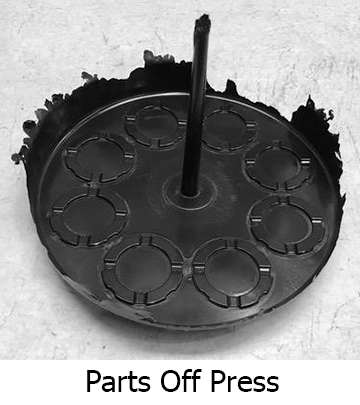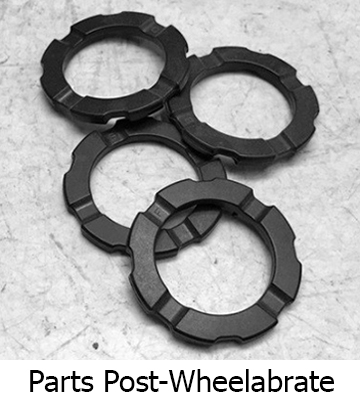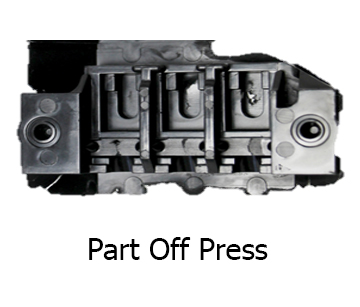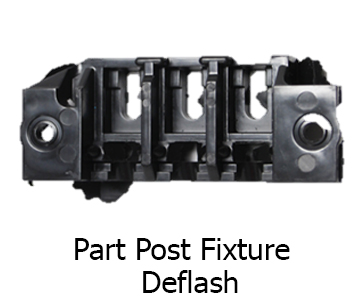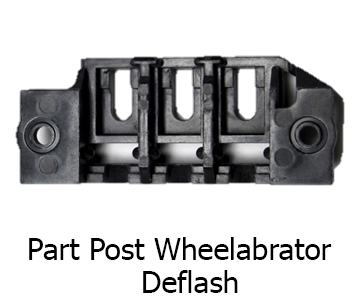Deflashing in Thermoset Molding
As a custom thermoset molder, Woodland Plastics sees a vast variety of product applications and components we mold for our customers. Regardless of whether the application is a large or small part, a basic part design or components with complex geometries; thermoset molded parts will always require a deflashing method to eliminate excess flash around the part. It’s important for thermoset molders to mold parts with enough flash to produce a full part, but limit flash enough so there is no issues in removing the excess material flash or taking too much time to remove the flash.
Why Deflash in Thermoset Molding?
Due to the nature of thermoset molding, all molded thermoset parts have excess polymer, or flash, on the part after molding. Flashing a part in thermoset provides a full shot during molding (opposed to a short shot which is scrapped), and also allows processors to vent gasses during molding. While deflashing is necessary in thermoset molding to produce an acceptable part, the excess flash must be removed post molding either manually by hand, automatically by machine, or with automation at the molding press.
What Options are Available for Deflashing?
Molders have a few options for deflashing parts after the molding operation. Thermoset parts may be deflashed by hand using a file, wooden dowel, or ceramic knife either at the press or during a secondary operation, depending on the time required to deflash. Aside from manual hand deflashing, thermoset parts may be deflashed via a machine such a wheelabrator or tumbler. A wheelabrator tumbles parts against each other while simultaneously blasting bits of media (commonly walnut shells or thermoplastic media). A third option for deflashing thermoset parts is via automation and robots, either as parts are ejecting from the mold or right after they have ejected and are cooling. Automation is suggested only for multi-year, high volume parts that offer a future cost break against the high up-front automation investment.
Why Deflash Manually?
Molders use a manual hand-deflash option for larger parts that are difficult to wheelabrate, or for more brittle parts that could crack or be damaged during the tumbling process. Hand deflashing gives molders’ flexibility to deflash at the press during the molding cycle, or “off-line” after the molding process with a secondary operation. The downside to a manual deflashing operation is generally higher costs per part due to the need to touch each part individually vs deflashing with a batch process using a wheelabrator or tumbler.
Why Deflash with a Wheelabrator?
In order to maximize efficiency and costs, molders may deflash thermoset parts in a batch process using a wheelabrator. By using a wheelabrator, thermoset molders can deflash many parts at a time within a set increment of time. Wheelabrators use small pieces of media (commonly walnut shells or thermoplastic media) used to blast the parts while they are tumbling, allowing small cracks and crevices to be deflashed without having to manually deflash by hand. Some part geometries may not be suited to wheelabrate however, such as parts with sharp corners or edges that may break off or chip during the tumbling process.

